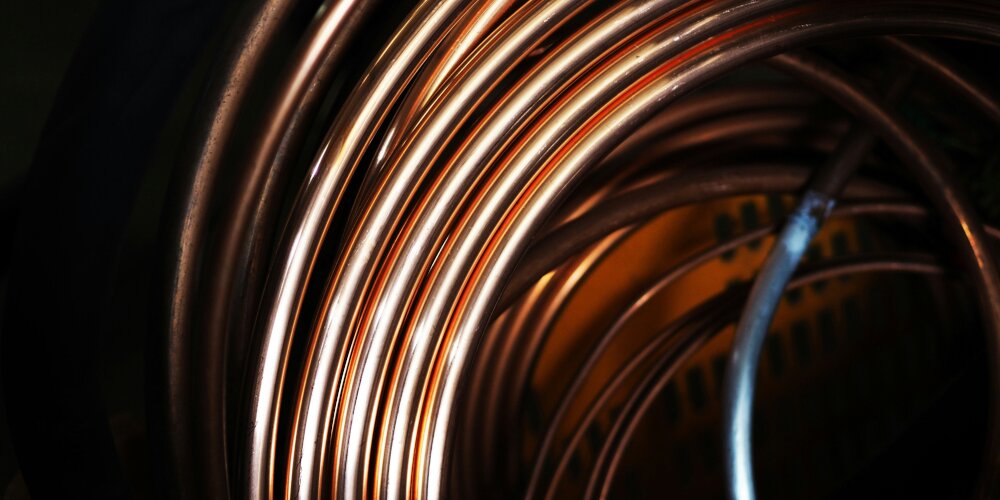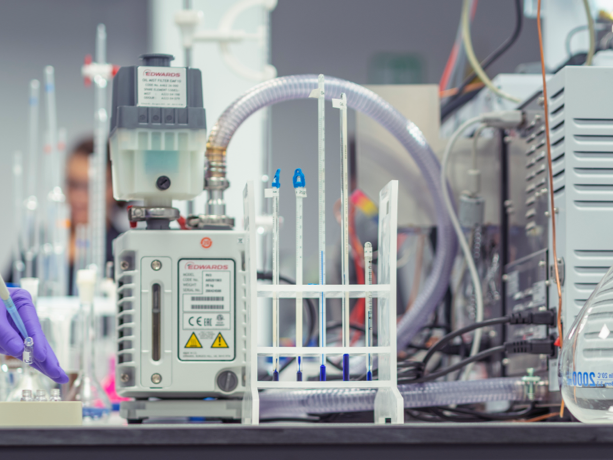What Metals Are Non-Ferrous?

From aerospace engineering to electronics, medical devices to marine environments, non-ferrous metals are incredibly valuable to manufacturers because of their unique properties. This means that it’s vital to know which metals are non-ferrous, and how to identify them.
In this guide, our team will take you through exactly what non-ferrous metals are, their key characteristics, and the methods through which you can identify them…
What does non-ferrous mean for metals?
When it comes to classifying metals, they’re typically separated into two categories: ferrous and non-ferrous. Ferrous metals are those in which iron is a primary element (the name ferrous derives from ferrum, which is Latin for ‘iron’).
Adding the prefix ‘non-’ negates the word after it, which means that at the most basic level, non-ferrous metals are those without iron. While an absolute absence of iron is not strictly true, as some non-ferrous metals contain minute amounts, the classification is made due to the iron having no impact on the properties of the metal. This is because, if the distinction was a complete lack of iron, there would be very few truly non-ferrous metals. Instead, non-ferrous metals are classified as those without a significant amount of iron.
Scientifically, all pure metals – aside from iron (Fe) as the obvious outlier – are non-ferrous elements. These are obtained from minerals and natural resources, which are subsequently refined via electrolysis to extract the desired element. For example, bauxite ore is one of the primary sources of aluminium, cassiterite is a source of tin, and copper is typically obtained from sulphides like chalcopyrite or bornite.
What are examples of non-ferrous metals?
Knowing now what non-ferrous means, we’ve included some of the most commonly used non-ferrous metals and their applications below…
- Copper: known for its high thermal and electrical conductivity, copper is frequently used in electrical wiring and plumbing applications. While it is traditionally a reddish orange, it notably turns green when exposed when oxidised.
- Aluminium: highly prized for being lightweight, corrosion resistant, and exceptionally malleable, aluminium is used for everything from high-tech aerospace and automotive applications to drinks cans.
- Lead: known as the heaviest common metal, lead is highly chemically resistant and less likely to corrode. While many previous uses have been halted, such as paint and make-up (because lead is highly toxic to humans), it can still be found in batteries, power cables, etc.
- Zinc: instead of being used on its own, zinc is a common alloy in bronze and brass, in addition to improving rust resistance in metals such as steel through galvanisation. Outside of these, zinc oxide is used in batteries and electrical equipment.
- Nickel: nickel is mainly known for its high corrosion resistance. This has made it a valuable alloy in the production of stainless steel, or copper-nickel alloys like Monel, which are useful in marine environments to reduce biofouling.
- Gold: prized for millennia, gold is a soft, malleable non-ferrous metal that’s both resistant to environmental corrosion, and also electrically conductive. It’s most commonly used in jewellery, but also plays a key part in electronic equipment.
- Silver: like gold, silver has traditionally been valued for its appearance, being used for jewellery, coins, and stained-glass – particularly as it’s soft when heated and resistant to tarnishing. However, it’s also useful for water filtration, reflective equipment, and more.
- Titanium: popularly used in aerospace engineering, titanium has an exceptional strength to weight ratio. It’s also got good corrosion resistance, and can be alloyed for practical applications in the medical and automotive industries.
This is just a snapshot of non-ferrous metals, as there are a lot of others that we haven’t mentioned. These include, but are not limited to, cobalt, mercury, tungsten, vanadium, zirconium, gallium, lithium. These are used in everything from the manufacture of portable electrical components and batteries, to nuclear reactor cladding and jet engines – and so much more.
Aside from elemental metals, there are two non-ferrous metal alloys that are commonly used in manufacturing and engineering. These are:
- Bronze: an alloy of copper and tin, bronze is corrosion resistant, even in salty conditions. This has made it popular for use in marine applications where the conditions affect the integrity of a metal. It’s also notably harder than brass (see below).
- Brass: brass is an alloy of copper and zinc, making it highly corrosion resistant. Importantly, it’s also ‘galling’ resistant. Galling is when a metal rubs and wears against itself, and the friction causes damage. Brass is more resistant to this, which explains its popular usage where low friction is required, such as in mechanical parts and close machinery.
What are the properties of non-ferrous metals?
As you can see, there is a wealth of non-ferrous metals to utilise across various industries. While each metal has its own distinct properties and uses, there are some overarching characteristics they have in common:
- Lightweight: non-ferrous metals are typically lighter than their ferrous counterparts, which means ideal when weight is a significant factor – such as in aerospace or aeronautic components.
- Electrical conductivity: non-ferrous metals are known for being good electrical conductors, so can be used in electronics, wiring, and battery technology.
- Thermal conductivity: non-ferrous metals are good at moving heat away from heat-generating components. This transfer helps to reduce overheating and associated damage or complications.
- Corrosion resistance: as we mentioned above, non-ferrous metals are excellent at resisting corrosion. They also don’t rust, since there is not enough iron to oxidise.
- Non-magnetic: unlike iron-based metals, there is no magnetic interference with non-ferrous ones. This means they can be used in electrical systems, medical devices, and jewellery – where magnetism can be very dangerous.
- Malleable: non-ferrous metals are malleable, which makes them easy to cast, shape, and weld. This explains why they’re popular for making decorative elements, or for use in bespoke components.
- Aesthetically pleasing: on a more superficial level, non-ferrous metals are typically more aesthetically pleasing. Unlike the greys of iron, non-ferrous metals come in more colours (like reddish-orange, gold, silver), and are usually shiny rather than matte.
How to identify non-ferrous metals
There are a bevy of ways you can identify non-ferrous metals, each with varying levels of accuracy…
Firstly, you can look at the appearance of the metal in question. Gold and silver are generally more obvious, even to non-experts, from their characteristic colouring. Copper is also easier to spot, especially if it’s been exposed to the elements – turning from a vibrant reddish-orange to a bluish-green. In addition, non-ferrous metals tend to be shinier than ferrous metals, allowing for a preliminary identification.
Another clue is to look for rust. Rust is the colloquial term for iron oxide; since iron isn’t a major component of non-ferrous metals, its presence is an easy way to eliminate a sample as non-ferrous. Metals may also be tested using a magnet. Non-ferrous metals are non-magnetic, so they won’t be attracted during this test. Even if you are unable to exactly define the material, you can at least separate it from ferrous materials.
Hardness tests may help to identify if a metal is ferrous or not. Non-ferrous metals are usually softer, with a lower tensile strength, than ferrous metals – however there are exceptions, namely titanium. While not conclusive, using this test may help to narrow down whether a metal fits in either category.
For the most accurate results, you will find your answers through scientific tests. More specifically, through chemical analysis. This is the only way to fully examine the metallic components on an elemental level and tell if a metal is non-ferrous by its chemical composition.
Why is it important to know if a metal is non-ferrous?
But why go to all the trouble of identifying a metal? Why is it important to know if a metal is non-ferrous?
There are in fact several reasons why it’s essential to know the composition of a material…
- Application: a component can only perform effectively if it’s made with the right materials. Understanding how to make use of the properties of a metal to their best ability ensures that you can maximise the functionality and longevity of each part, and match the material to the application. For example:
- Steel is too heavy to use in aerospace engineering – however titanium and aluminium are lightweight and strong.
- Iron corrodes quickly, especially in wet conditions. For marine applications, nickel is the better choice.
- Acquisition and disposal: obtaining non-ferrous metals can be harder due to their rarity, which in turn makes proper recycling and disposal essential. Non-ferrous metals can be recycled over and over because they don't degrade during the process. This is important because it keeps them in circulation for longer, which is cheaper in the long run, more sustainable, and reduces the impact of mining on the environment.
- Non-ferrous metals are derived from various ores, sulphides, and carbonates, which need to be extracted from the earth. This can make acquisition more logistically difficult, reinforcing the need for effective recycling strategies.
- Cost: non-ferrous metals tend to be much more expensive than ferrous metals; both because the elements are rarer, and because they’re in such high demand. The process of extraction is also expensive, compounding the costs.
- Knowing if you need a specific non-ferrous metal, or if you can replace it with a more affordable option, helps engineers and manufacturers allocate their budget more efficiently.
The Lab: home to in-depth material composition analysis
Need to identify a mystery metal? You’ve come to the right place. At The Lab, we have a superb team of expert metallurgists and scientists able to conduct chemical and mechanical material identification tests to provide you with reliable results.
Whether you’re developing a new product, or need to understand if your material complies with the correct regulations, contact us for expert analysis and practical advice. Book your no-obligation consultation today!
Discover our material identification and hardness testing services today
For more news, information, and the latest industry insights, explore The Lab’s News and Knowledge Hub…
The Rise of Bio-Based Solutions Aims to Future-Proof Coatings | Cutting-Edge Techniques Revolutionise Metal Corrosion Analysis | NASA Harnesses AI to Drastically Reduce Product Development Time
- Author
- Andrew Yarwood
- Date
- 04/06/2025
